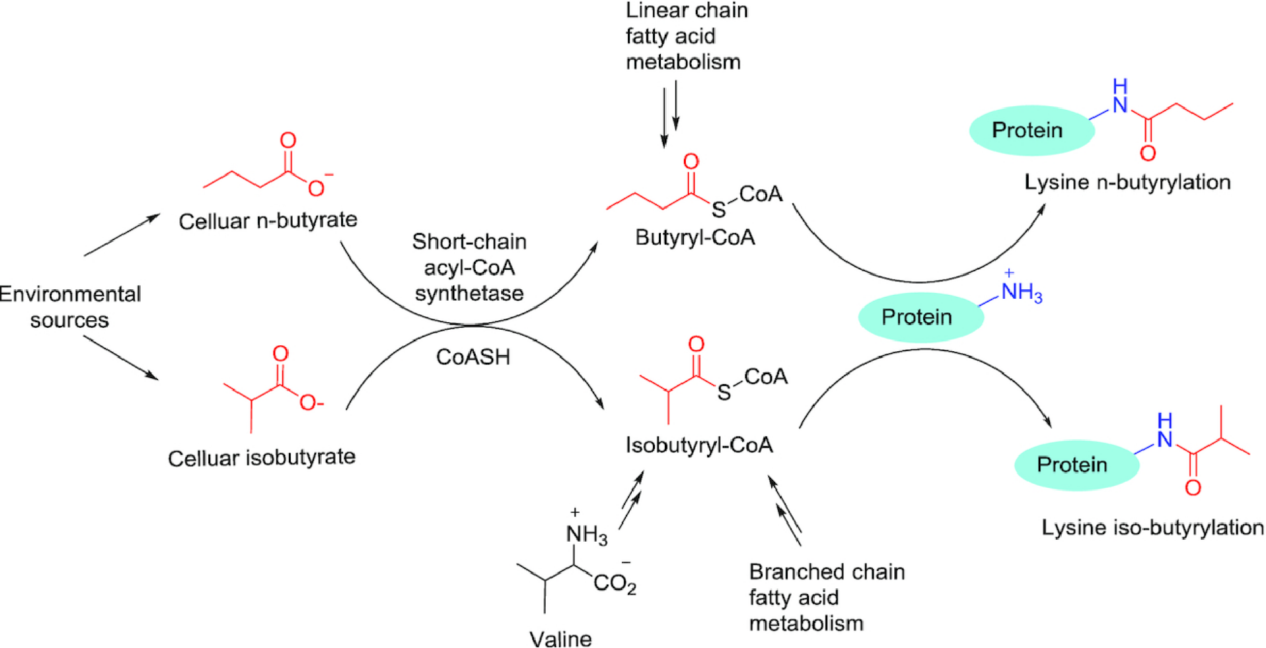Butyrylation Analysis Service
Protein butyrylation is a reversible post-translational modification in which a butyryl group is covalently attached to lysine residues, modulating protein activity, localization, and interaction networks. This acylation has garnered increasing attention due to its regulatory roles in metabolism, gene expression, and disease development. MtoZ Biolabs provides a comprehensive Butyrylation Analysis Service that integrates selective enrichment techniques with high-resolution LC-MS/MS to accurately identify, quantify, and interpret butyrylated proteins under diverse biological conditions.
To meet different research objectives, MtoZ Biolabs offers two complementary analytical approaches:
💠Target Protein Butyrylation Analysis
This targeted approach is designed for researchers focusing on specific proteins of interest. By applying immunoaffinity enrichment and high-resolution mass spectrometry, we precisely identify and quantify butyrylation sites on individual protein targets. This enables detailed investigation of how butyrylation influences protein structure, enzymatic activity, and functional regulation under various experimental or pathological states.
💠Butyrylation Proteomics
For global, system-level studies, MtoZ Biolabs provides butyrylation proteomics analysis. This workflow combines large-scale LC-MS/MS profiling with advanced quantitative strategies to systematically characterize butyrylated proteins across the entire proteome. Through differential expression, pathway enrichment, and protein–protein interaction network analysis, researchers can uncover the dynamic roles of butyrylation in cellular signaling and metabolic regulation.
What Is Butyrylation?
Protein butyrylation is a reversible lysine acylation in which a butyryl group from butyryl-CoA is transferred to lysine residues. This modification was first reported on histones, where it influenced chromatin structure and transcriptional activity, but has since been identified on non-histone proteins as well. As a metabolic intermediate, butyryl-CoA is primarily derived from fatty acid oxidation and provides a direct biochemical link between nutrient metabolism and protein regulation.
Butyrylation belongs to the broader family of lysine acylations, alongside acetylation, propionylation, crotonylation, succinylation, and others. While acetylation has been extensively studied, butyrylation introduces distinct structural and functional consequences. For example, competition between acetylation and butyrylation at specific histone residues can alter the recruitment of reader proteins, thereby affecting gene expression and chromatin dynamics.

Zhu, Z. et al. Nucleic Acids Res. 2021.
Figure 1. Distinct Pathways for the Formation of Butyryl-CoA and Isobutyl-CoA and Their Consequences in Leading to Protein Lysine Butyrylation
With the advancement of high-resolution mass spectrometry, butyrylation has been increasingly recognized as an important regulator of cellular pathways, including gene transcription, metabolism, and protein homeostasis. Dysregulation of this modification has been associated with pathological conditions such as cancer, cardiovascular diseases, and metabolic disorders. Mapping the substrates and sites of lysine butyrylation, and understanding its interplay with other acyl modifications, is therefore essential for both fundamental biology and translational research.
Analysis Workflow

Sample Submission Suggestions
1. Sample Types
We accept various biological sample types, including but not limited to:
-
Cultured cells
-
Animal or human tissue
-
Plant tissue
-
Biological fluids such as plasma or serum
2. Storage and Transport
Samples should be snap-frozen in liquid nitrogen and stored at –80°C until shipment. Ship samples on dry ice. Avoid repeated freeze–thaw cycles.
Clients are encouraged to contact MtoZ Biolabs prior to submission for tailored sample preparation advice.
Service Advantages
✔️Advanced Analytical Platforms
MtoZ Biolabs established an advanced protein post-translational modifications analysis platform, guaranteeing reliable, fast, and highly accurate butyrylation analysis service.
✔️Comprehensive Workflow
From sample preparation to bioinformatics interpretation, we provide an integrated service pipeline.
✔️Expertise in PTM Analysis
A dedicated team with extensive experience in post-translational modification studies.
✔️Customizable Solutions
Flexible reporting and tailored data analysis to meet specific research goals.
✔️Reliable and Reproducible Results
Stringent quality control ensures confidence in both identification and quantification
Applications
The Butyrylation Analysis Service at MtoZ Biolabs can be applied across diverse areas of life science research, including:
1. Reproductive and Developmental Biology
Studying histone butyrylation during spermatogenesis and embryonic development to uncover its role in chromatin remodeling and gene expression.
2. Metabolic Regulation
Exploring the link between butyryl-CoA metabolism and protein regulation, providing insights into nutrient sensing and energy balance.
3. Disease Mechanisms
Investigating aberrant butyrylation patterns in cancer, cardiovascular disease, neurodegeneration, and metabolic disorders.
4. Biomarker Discovery and Drug Development
Identifying butyrylation-associated proteins as potential biomarkers or therapeutic targets for clinical applications.
Deliverables
1. Comprehensive Experimental Details
2. Materials, Instruments, and Methods
3. The Detailed Information of Butyrylation Analysis
4. Mass Spectrometry Image
5. Bioinformatics Analysis
6. Raw Data
MtoZ Biolabs combines advanced instrumentation, optimized enrichment strategies, and extensive PTM expertise to deliver comprehensive butyrylation analysis. Our team ensures not only accurate detection but also meaningful biological interpretation, providing actionable insights for basic and translational research. Free project evaluation, welcome to learn more details!







